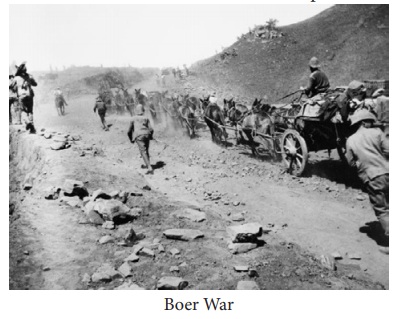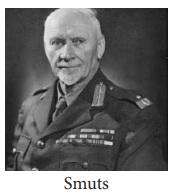World between Two World Wars | History - Anti-Colonial Movements in Africa | 10th Social Science : History : Chapter 2 : The World between Two World Wars
Chapter: 10th Social Science : History : Chapter 2 : The World between Two World Wars
Anti-Colonial Movements in Africa
Anti-Colonial Movements in Africa
Colonisation of Africa
The
African coastline had been explored in the sixteenth century and a few European
settlements had come about. But the interior of Africa was unknown to the
outside world until the last quarter of nineteenth century. European
colonisation began after about 1875. The Berlin Colonial Conference of 1884–85
resolved that Africa should be divided into spheres of influence of various
colonial powers. The war between the British and Boers in South Africa,
however, was in defiance of this resolution.
Boer Wars
The
relations between the two British colonies of Natal and Cape Colony and the two
independent Boer states of the Transvaal and the Orange Free State had long
been unfriendly. The discovery of gold in Transvaal, in 1886, led to large
numbers of British miners settling in and around Johannesburg. The Boers hated
these people whom they referred to as Uitlanders (foreigners). The Boers taxed
them heavily apart from denying political rights. So the question was whether
the British or the Boers were to be supreme in South Africa. Fearing attacks
from the British, the Boers armed themselves and decided to attack.
The Boer
War lasted for three years, 1899-1902. Initially, the Boers were successful.
But by the first half of 1900, the Boer army was defeated. Pretoria was
occupied. The Boers took to guerrilla fighting. This continued for about two
years. In retaliation the British destroyed farms and crops. They set up
internment camps for Boer women and children. Shortage of food, medical and
sanitary facilities caused the death of 26,000 people. The British annexed the
two Boer states. Boers were however promised self-government in due course. In
1907 full responsible government was given to the Transvaal and the Orange Free
State. The four states formed into a union and the South Africa Act passed by
the British parliament in 1909 provided for a Union Parliament at Cape Town.
The Union of South Africa came into being in May 1910.

The descendents of original Dutch settlers of South Africa, also
known as Afrikaners, were called Boers. Their language is Afrikaans.
Nationalist Politics in South Africa
There
were two main political parties: the Unionist Party which was mainly British,
and the South Africa Party which had largely Afrikaners (Boers). The first
Prime Minister, Botha belonged to the South Africa Party ruled in cooperation
with the British. But a militant section of the South Africa Party formed the
National Party under Herzog. In the 1920 elections the National Party gained
forty-four seats. The South Africa Party, now led by Smuts, secured forty-one
seats. At this juncture the British-dominated Unionist Party merged with the
South Africa Party. This gave Smuts a majority over the militant Afrikaner-
controlled Smuts National Party.

Racist Policy against the Blacks
The
Afrikaners pursued a harsher, racist policy towards the blacks and the minority
Indians. In 1923 an Act was passed to confine the native residents to certain
parts of towns. Already an Act of 1913 had segregated black and white farmers, which
made it impossible for the blacks to acquire land in most parts of the country.
The 1924 elections were won by the National Party with the support of the
Labour movement, composed mainly of white miners. The Act passed in 1924
prevented blacks from striking work and from joining trade unions. In the Cape
Province the voting right to blacks was abolished. Native Blacks suffered in
all spheres: social, economic and politics.
Apartheid in South Africa
Apartheid, which means separateness, became the racial policy of
the Nationalist Party in 1947. From 1950 onwards a series of laws came to be
enforced. The whole country was divided into separate areas for the different
races.

Marriage between white and non-white was forbidden. Nearly all
schools were brought under government control so that education different from
that of the Whites could be implemented for Africans. University education was
also segregated. Apartheid is based on the belief that the political equality
of White and Black in South Africa would mean Black rule. The ANC which fought
the practice of racism was banned and its leader Nelson Mandela was put behind
bars. Mounting pressure at the global level helped to end the racist regime in
South Africa. In 1990 the ban on ANC was lifted and Mandela freed after 27
years. In the elections held subsequently the Africans were allowed to vote and
ANC won the election and Mandela became the first black president of South
Africa. Even though apartheid was dismantled the Whites completely dominate the
economic sphere.
Related Topics